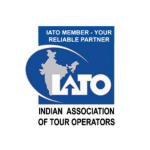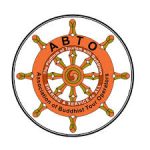Approved By Ministry of Tourism, Govt. of India – Reg. No.: 5.TT.II ( 188 ) / 2000 – ITO
Era Tours & Travels (India) Pvt. Ltd.
Menu
All foreign nationals entering India are required to carry a valid international passport along with a valid visa obtained from an Indian Consular offices or post abroad or under the e-Tourist Visa (eTV) Scheme given below. Maximum period granted for tourist visa is 180 days on multiple entry. We suggest you to obtain multiple entry visa before start of journey if visiting neighbouring countries of Nepal and Sri Lanka.
e-Tourist Visa (eTV)
Launched on 27 Nov 2014, under Tourist Visa on Arrival (TVOA) enabled with Electronic Travel Authorization (ETA) Scheme (since 15 April renamed as e-Tourist Visa (eTV) ), a visitor wanting to visit India can apply for Online Visa up to 04 days in advance from the day of commencement of Journey.
STEPS - E-Tourist Visa Application -- Complete Partially Filled Form -- Pay Visa Fees -- Print Visa Application -- Receive eTV Online -- Fly To India
Airport for e-Tourist Visa (eTV) - The facility will be available at 16 International airports in the country namely Delhi, Mumbai, Tamil Nadu(Chennai, Coimbatore) , Kolkata, Hyderabad, Bengaluru,Thiruvananthapuram, Kochi, Goa, etc.
The information and instructions for the e-Tourist Visa (eTV) is available on: https://indianvisaonline.gov.in/visa/tvoa.html
Protected, Partially Protected & Restricted Areas- While States of MANIPUR, MIZORAM, ARUNACHAL PRADESH, NAGALAND are Protected Areas, RAJASTHAN, SIKKIM, JAMMU & KASHMIR, HIMACHAL PRADESH & UTTAR PRADESH have Partially Protected Areas. Similarly ANDAMAN NICOBAR ISLANDS has Restricted Areas.
Any person, foreigner or Indian.(excluding infants below six months) arriving in India are required to carry a vaccination certificate of yellow fever, if arriving from a yellow fever endemic area. Guests are requested to drink mineral water and eat hygienic food during their journey's in order to remain in good health and avoid unwanted diseases. Good hospitals & dispensaries are available in most part of the country.
CLIMATE
Indian climate is one of the unique climates that is divided in many seasons as below.
Winter- Winter season in India start from December to March. The coldest months are December and January, when temperatures average around 10 , 15 , C (50 , 59 , F) in the northwest. Temperatures rise as one proceeds towards the equator, peaking around 20,25 ,C (68,77 ,F) in mainland India's southeast.
Summer- Summer season in India start from April to June (April to July in northwestern India). In western and southern regions, the hottest month is April; for northern regions, May is the hottest month. Temperatures average around 32,40 ,C (90,104 ,F) in most of the interior.
Monsoon- Monsoon season in India from July to September. The season is dominated by the humid southwest summer monsoon, which slowly sweeps across the country beginning in late May or early June. Monsoon rains begin to recede from North India at the beginning of October. South India typically receives more rainfall.
Post-monsoon or autumn- It is start from October to November. In northwestern India, October and November are usually cloudless. Tamil Nadu receives most of its annual precipitation in the northeast monsoon season.
It is advisable to choose your clothing according to the season on your Indian Tour.
For summers - Light cotton clothes are suitable as it prevents from heat and dust of Indian summers.
For winters- Woollen clothes like jackets, sweaters, trousers etc. are to be carried to protect you from bitter cold of northern and central India.
Advisable to wear good sturdy shoes to protect your feet from dust and dirt and also ease your feet on long walks.
While visiting a religious destination, please cover your head with a stole or a handkerchief in order to avoid hurting religious sentiments of people.
Carry sunblock lotion, sunglasses, insect repellent, sun hat, flashlight, additional camera battery, tissues, and basic medicine in your hand luggage bag. Please visit www.imd.gov.in ; for weather updates in Delhi. Temperatures in Capital Delhi range between 10- 20'C in winters & 30'- 45'C in Summers.
Electricity: In India electricity is provided at 220 V, 50 Hz. Sockets take round pins (2 or 3). Adapters are generally available at all hotels.
Time Zone:Every country's Time Zone become different that is calculated by GMT. India is + 5.30 hrs forward to GMT.
For fabrics, silverware, carpets, leatherwork, antiques- the list is endless, India is a shopping paradise. Goods are exotic, attractive, beautiful hand-crafted and excellent value for money. Half the fun when buying goods in the markets is the bargaining, and you can always check for reasonable prices at state-run emporiums. Below are some of the best buys, either for the souvenir hunter or the connoisseur.
OTHER BUYS: Foods such as pickles, spices and Indian tea, perfumes, soap, handmade paper, Orissa's playing cards, musical instruments- anything that takes your fancy.
NOTE: It is forbidden to export antiques and art objects over 100 years old. Please check health & other regulatory requirements before carrying / exporting items like herbs, antiques, medicines etc with you.
Customs: Visitors are generally required to make a verbal identification of their baggage and declare foreign currency in excess of US$ 5,000 (whether Cash or TCs). Beyond this amount one needs to make currency declarations in prescribed form (CDF) in front of the Customs officer. More than US$ 5000, rest amount is to be carried in form of Traveller Cheques.
Currency: The currency of Indiais Indian Rupee (Rs.). One Rupee is divided into 100 Paisa. Rupee currency notes come in the denomination of 5, 10, 20, 50, 100, 500 and 1000. Current exchange rate is US$ 1= INR 66.00/ 1 Euro = INR 75/ (approx). For updated rates please refer to our Currency link.
Credit / Debit Cards: Almost all credit cards like VISA, Master card, Amex etc. are widely accepted by establishments including hotels, restaurants, shops etc.
Banking and exchange facilities: Currency exchange facilities are available at banks and at hotels. Most banks are open from 10 AM to 2 PM from Monday to Friday; However some banks offer extended banking hours. 24 hour ATMs are located in shopping centres and many neighbourhood markets.
Taxis are available on call 24 hrs. Over the telephone. Airconditioned (AC) Radio taxis may be called by dialing +911143434343, +911144224422 or the concierge at the hotel reception can also be approached for the same. These taxis have a flat charge of 20- 25/per Km (average current rate) and are available at both the International and domestic terminals. In addition, there are prepaid counters at the airport for travel to any part of the city. Time Zone: India is 51/ 2 hours ahead of GMT, 41/ 2 hours behind Australian Eastern Time & 101/ 2 hours ahead of American Eastern Standard Time.
Language: Hindi is the most widely spoken language. However, English is the generally the official language for the Conference and commonly used in all business transactions.
Guides - We strongly recommend to use only company provided tourist guides. Check their Registration for your satisfaction.
Although India is a wonderful country with friendly people but to be on the safer side, tourists are advised to follow certain safety guidelines to make their tour in India hassle-free.
* Keep yourself aware with the local laws and customs of India as it will help you to enjoy a hassle free trip. Keep local sensibilities in mind.
* Go according to your original plans and don't get swayed by the offers of better hotels and accommodation by strangers. Nor allow them to enter your room.
* Avoid discussing your travel plans & your finances with strangers. Don't carry too much of cash. Use lockers for Passport, cash & valuables at Hotel/secured suitcases.
* You are advised not to travel alone at night, especially on roads and dimly lit lanes. Meet any client or person, meet at a public place
* Take care of your luggage and never hand it over to any unknown person.
* Keep your necessary medications with you.
* Do make copies of the important documents like visa and passport, TCs etc. as it will be helpful in case any document is lost.




© 2025-26 ERA Tours & Travels All Rights Reserved.